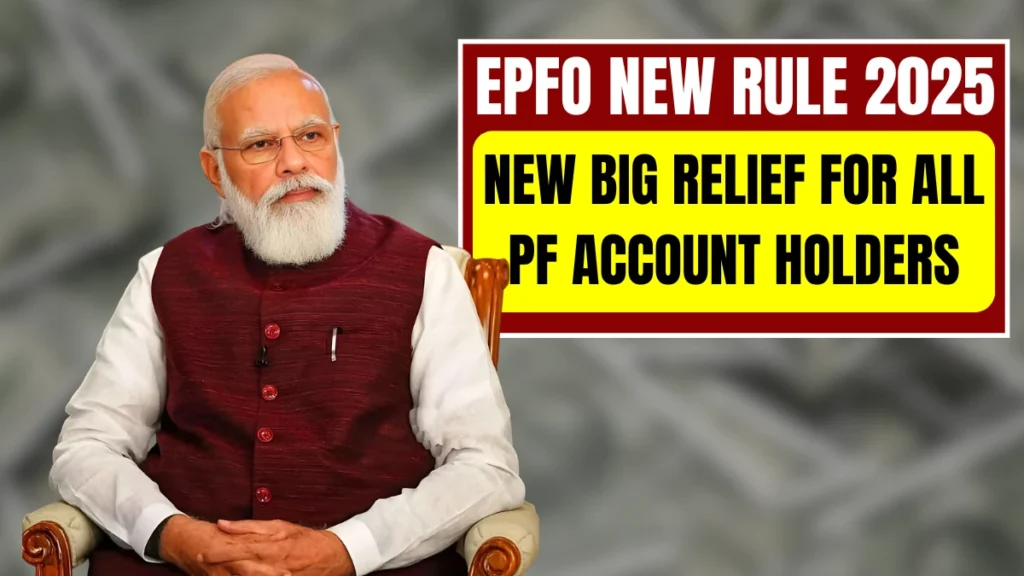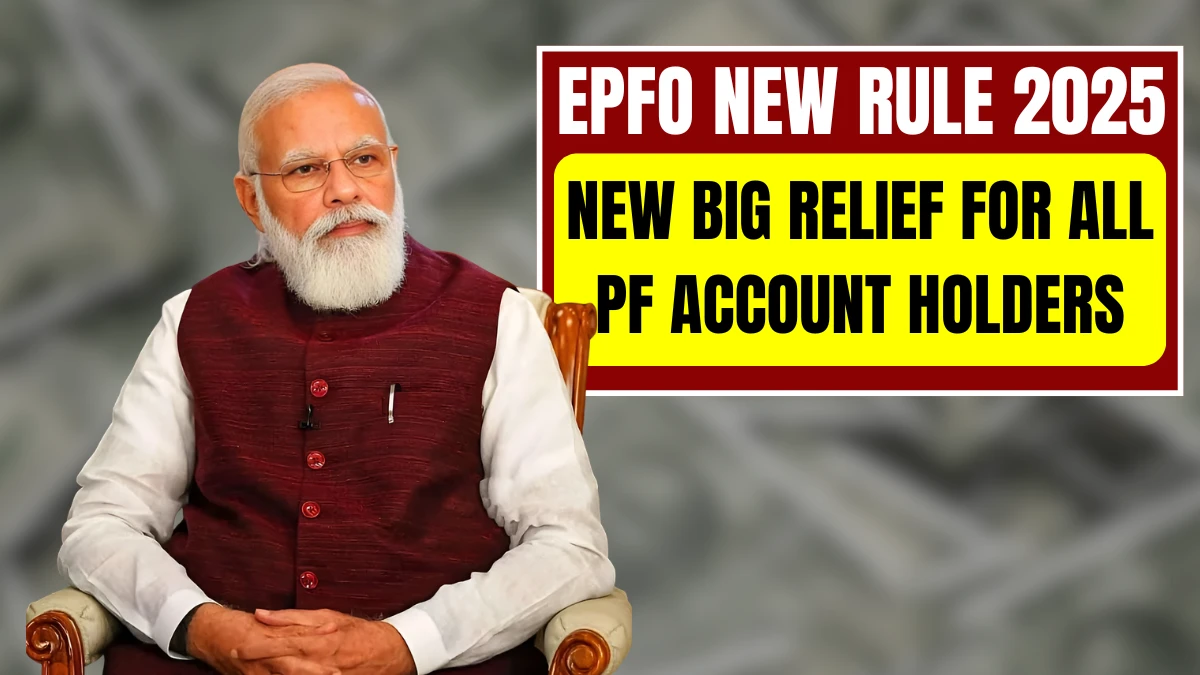The government has introduced new EPFO rules in 2025 that bring considerable relief to millions of Employees’ Provident Fund (EPF) account holders. These changes aim to make the EPF system more flexible, accessible, and aligned with current employment patterns. With job mobility on the rise and economic uncertainties continuing, the new rules offer a strong blend of support and security for working individuals across India.

Easier partial fund withdrawals
One of the major reforms introduced in 2025 is the simplification of partial withdrawal categories. Earlier, there were multiple conditions under which a member could withdraw funds from their EPF account. These included situations like medical emergencies, house construction, education, and marriage. Now, the government has consolidated all these into three broad categories: essential needs, housing, and special circumstances.
This has made the process much more straightforward. The minimum requirement of service duration has been reduced, allowing employees with just one year of service to become eligible for certain types of withdrawals. This move is expected to benefit younger workers who need access to their funds without unnecessary complications.
New unemployment withdrawal benefit
Another significant change is related to unemployment. If a member loses their job, they can now withdraw up to 75% of their EPF balance immediately. Earlier, the amount and process were more limited. The remaining 25% of the balance can be withdrawn after 12 months of continuous unemployment.
This change provides a much-needed financial cushion during times of uncertainty. It also helps employees transition from one job to another without facing severe financial strain. This move is especially beneficial in industries where job loss or temporary gaps in employment are more common.
Minimum balance rule added
To ensure that the long-term goal of retirement security is not compromised, a new rule requires that a minimum of 25% of the EPF corpus remain untouched even after partial withdrawals. This balance will continue to earn interest and act as a growing retirement fund.
The idea behind this rule is to help members avoid depleting their savings too early. It strikes a balance between offering flexibility and preserving financial stability for the future. Individuals are now more empowered, yet still guided towards responsible financial planning.
Better death benefit coverage
Changes have also been made to the death benefit provided under the Employee Deposit Linked Insurance (EDLI) scheme. In the unfortunate event of a member’s death, the insurance amount paid to their family has been revised to include a minimum guaranteed payout, even if the person did not complete one year of continuous service.
This new policy also allows for brief gaps between two jobs—up to two months—to be counted as continuous service. This makes it easier for family members of deceased employees to claim insurance benefits and receive financial support during difficult times.
Faster digital claim processing
In line with the government’s digital push, EPFO services are also becoming more tech-friendly. New digital reforms are making claim processing faster and more efficient. The limit for automatic settlement of advance claims has been increased significantly. This means many claims will no longer require manual approval, cutting down processing time and reducing the need for repeated follow-ups.
Members are now able to track their claims, update details, and link essential documents like Aadhaar through mobile apps and online portals. This shift to digital ensures that employees in rural or remote areas also get timely access to services without needing to visit EPFO offices.
Enrolment drive for new members
Another highlight of the new rule framework is a fresh drive to bring more workers into the EPF system. Many employees in the informal sector or contractual jobs were previously excluded from provident fund benefits due to lack of formal registration or delays in employer compliance.
Under the 2025 changes, employers are encouraged to enrol all eligible workers who may have joined between 2017 and 2025 but were not declared under EPFO. This move not only widens the safety net for workers but also encourages accountability among employers.
Encouragement for long term saving
While the new rules do allow easier access to funds, they also promote a culture of saving for the future. By ensuring that at least a quarter of the corpus remains invested, EPFO continues to fulfil its core goal: building a strong financial base for retirement.
Interest rates on EPF balances remain competitive compared to other saving instruments. With compounding benefits and long-term stability, the EPF remains one of the most dependable retirement tools available to Indian workers. The 2025 reforms only strengthen this foundation by ensuring people don’t drain their savings prematurely.
How these changes affect you
If you are an EPF account holder, you now have more flexibility and faster access to your funds. Whether you’re facing unemployment, need to pay for emergencies, or plan to build a house, the new rules make the process smoother and more efficient.
However, this also means you need to be more aware of your EPF account. Keep your Universal Account Number (UAN) active, ensure all KYC documents are updated, and stay informed about the changes. The system now offers more control in your hands—but using it wisely is key to long-term benefit.
Final thoughts on EPFO reform
The EPFO New Rule 2025 is a strong step toward creating a more dynamic and responsive social security system. By balancing the need for immediate financial support with the responsibility of long-term savings, the government has given Indian workers greater control over their money.
These reforms reflect the changing landscape of employment in India and make the EPF system more relevant, inclusive, and effective. It is now up to the members to take full advantage of these benefits, stay informed, and use their EPF accounts not just as a fallback, but as a vital part of their financial future.
